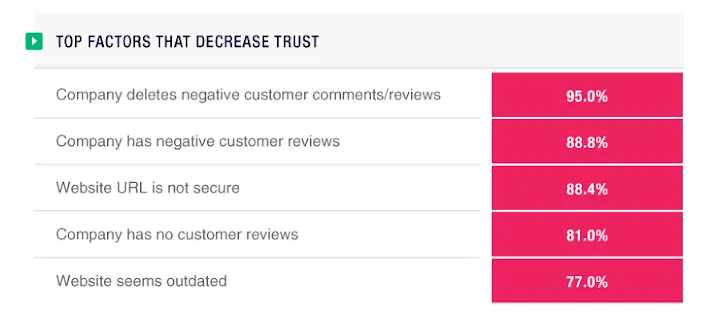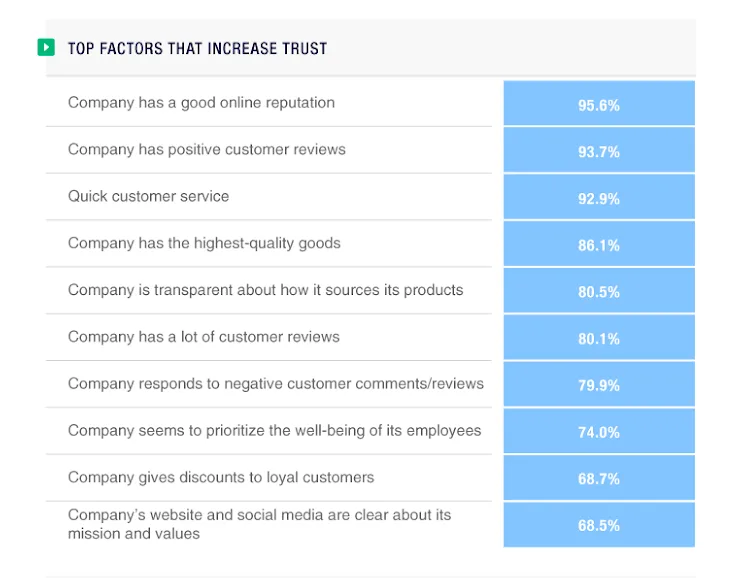
$1.1 trillion. That's how much retailers expect to rake in this holiday season, according to Deloitte's annual holiday retail forecast — a 4.5% to 5% jump from last year at this time across every retail category.
Now if we zoom in on just eCommerce, sales are expected to grow even more — from 14% to 18% (compared to 11.2% growth in 2018), working out to between $144 billion to $149 billion in holiday sales this year.
It would seem that it’s quite a time to be selling things online. But what does it all mean for online shoppers around the holidays?
With billions of dollars at stake, history has proven that between October and December, 'tis the season for scams and rip offs.
To name just a few scams likely to be at the top of consumers’ minds while shopping for holiday gifts this year:
Forbes examined phony tracking numbers among other inventive delivery scams targeting Amazon shoppers over the winter holiday shopping rush.
Speaking of the eCommerce giant, 9.1% of Amazon's 250 million reviews are estimated to be fake, fraudulent, or "unnatural" in a direct attempt to fool online shoppers.
The AARP reports fake shopping sites and apps every holiday season.
And perhaps most interestingly, no age group is exempt from holiday shopping fraud: Despite being one of the most logged on generations, millennials are 25% more likely to report losing money to online shopping fraud than other demographics.
From knock off electronics (including fake Apple products) and bait-and-switch Facebook advertising to cheaply made Chinese clothing ($4 bikini, anyone?), to fraudulent product reviews, all coming to light in the last few years — it’s safe to say that online shoppers will be on the lookout for trustworthy brands to buy from this holiday season.
Ready to put your most trustworthy foot forward for the eCommerce holiday goldrush?
Here are five strategies to inspire customer confidence in even the most scrupulous holiday shoppers.
1. Have a presence on third-party review platforms
As the first place consumers go to shout about great shopping experiences, and sometimes cry foul, review platforms are a goldmine of consumer wisdom. The beauty of it is, that wisdom is readily accessible to fellow shoppers everywhere.
With more than 300,000+ reviewed companies, and 13,650,000+ organic reviews written on the Trustpilot platform, it stands to reason that reviews left on Trustpilot company profile pages are a great way for smart shoppers to suss out the integrity of a business they’re considering buying from.
And historical Trustpilot platform data shows that online shoppers try to do just that around the holidays — in past years, search volumes for reviews on Trustpilot surged around November and December, with nearly 480,000 review searches leading up to holiday purchases.
More than likely, during this period of increased review activity shoppers are on the lookout for warnings about products arriving not as advertised, or poor delivery experiences.
But consumers won’t find too many reviews on Trustpilot that mention these common scams outright. We’re proud to say that only 1.5% of all reviews and 3.5% of all negative reviews mention scams, according to a recent deep dive into Trustpilot’s review data.
That’s peanuts in the grand scheme of things.
Said differently, online shoppers look to platforms like Trustpilot as a key resource for finding credible companies to do business with, especially around the high stakes shopping months of the winter holiday season. Putting your company right where customers are looking is a great way to get discovered around the holidays.
And perhaps just as importantly for retailers doing business online, your future customers are likely to come across your profile on third-party review platforms at the very top of organic search results. So if you want to be sure holiday shoppers can easily find reviews of your business, grow your reputation where it matters.
2. Improve your online reputation to catch more holiday shoppers at the very top of the funnel
It’s no secret that in this day and age, even unscrupulous shoppers do a ton of research online before making a purchase. But what are they looking for?
If online shoppers don’t have a go-to provider for their particular needs, they’re almost always looking for trustworthy brands with an authentic online presence. This helps them figure out pretty quickly whether they’re willing to buy from an unfamiliar retailer.
In fact, recent consumer research confirms that online reputation is the number one way to improve trust with customers, with 90% of online shoppers ready to walk away from a brand that has a poor online reputation.
And we’d hazard an educated guess that shoppers are even less likely to take a chance on unreputable brands around the holidays than they would be ordinarily.

From The Value of a Trustworthy Brand Reputation (Trustpilot 2019)
On top of that, 93% of online shoppers say they read reviews before buying online, and as mentioned above, this behavior only increases around prime shopping dates. With so many options to choose from, it’s unlikely that online shoppers will opt to support a brand with a questionable reputation, or with no customer reviews to validate the product or service.

From The Value of a Trustworthy Brand Reputation (Trustpilot 2019)
So, what are some easy ways you can make sure your online reputation is bulletproof?
Proactively collect customer reviews. Per our research, 94% of customers are more likely to trust companies with positive reviews, and 80% will still trust companies with a high volume of reviews.
Never delete unfavorable reviews. 95% of online shoppers say they lose trust in companies that obviously curate their online reviews.
Keep the information and style of your website up to date. 77% of shoppers lose trust in brands and retailers with websites with an outdated look and feel.
Make sure your website has a secure web connection. 88% of shoppers are unlikely to convert on unsecured websites.
Do these things, and it’s unlikely that your future customers will suspect your business of any scammy practices.
3. Put trust signals front and center throughout the online shopping journey
Today’s online shoppers already have an unprecedented amount of choice. Despite marketers’ best efforts, the steady stream of holiday offers on every channel from September to December only adds to the noise.
As a result, your future customers need more third-party validation (and social proof) than ever when looking for the perfect holiday gifts online.
For the uninitiated, social proof — like reviews, social likes, online mentions, and testimonials for products, services, or brands — has a powerful psychological effect on shoppers. Because this kind of public support comes from other shoppers rather than from the business itself, the positive messaging surrounding the product or service comes off as more authentic and trustworthy.
Trust signals are a logical extension of this concept — think: visual representations of social proof like badges, ratings and scores, and even logos endorsing a product or service. And they should be front and center across the online shopping journey because they also elicit a strong influence on shopping behavior.
Per another recent consumer research report, almost all consumers (98%) could identify at least one type of trust signal that increased their likelihood to make a purchase.
We also uncovered that 82% of shoppers feel more comfortable making a purchase when they come across positive star ratings about the product or service in their shopping journey, and this percentage only goes up when they encounter ratings displayed on key pages like the homepage or product pages.

From The Psychology Behind Trust Signals (Trustpilot 2019)
Here are some things you should definitely keep in mind if you plan to use trust signals to cash in on even more holiday shopping conversions.
Trust signals work differently at each stage of the purchasing funnel.
Per our consumer research, when online shoppers are in the preliminary research phase of a purchase, they want to see that your product or service has been mentioned on blogs or in the media.
If they’re comparing several retailers, online reviews and customer testimonials are the first place shoppers look for support making their decision.
And finally, if they’re ready to check out, trust signals that communicate authenticity (think: Authorized Seller Badges) are what it takes to prevent an abandoned cart.
So, if you want to turn skeptical browsers into buyers this holiday season, make sure you’re placing trust signals thoughtfully throughout your online shopping journey.
4. Stay up to date on known red flags — and avoid them.
Today’s customers have seen it all, and they have access to plenty of information about trending scams and how to avoid them. For so many reasons, it’s wise to make sure you steer clear of any black hat marketing or site experience maneuvers that could inadvertently communicate to today’s educated consumers that your business is in any way dishonest.
Here’s a shortlist of holiday vibes you definitely don’t want to give off with your marketing offers or onsite experience this year:
Don’t send customers on a wild goose chase to redeem your offer. Customers today are hyper aware of scam tropes. Emails asking the recipient to click a link or download an app to access an offer are a known red flag, so keep marketing offers simple this holiday season.
Avoid offering suspiciously deep discounts. This is especially important if you’re selling trending gift items, which tend to make shoppers suspect that your offer is too good to be true.
Double, triple, quadruple check your spelling and grammar. In the eyes of savvy shoppers, poor spelling and grammar on your website, marketing materials, and emails are can indicate a careless or dishonest retailer.
Make your contact info and business details readily available. Whether you’re an eCommerce store, a service provider, or a travel business, websites that don’t provide their street number or address might stop online shoppers in their tracks.
Customers care about your return and refund policy. In fact, they care about all of your policies. Make sure that your terms of service, shipping and returns policy, and of course your privacy policy, are all discoverable onsite.
At the end of the day, we’re all consumers. So before you push out that marketing offer or website update, put yourself in your future customers’ shoes to make sure it doesn’t carry any tenets of a holiday scam.
5. Level up your customer experience ahead of the holidays to show shoppers they’re more than just revenue
We’ve covered what customers do not want to see in their online shopping journey. But the other side of that coin is what you can do to make sure you move shoppers to the final stage of your eCommerce funnel.
Customer experience is a hot topic year round because it drives loyalty and retention, helping you sustainably grow your bottom line. In fact, businesses at the frontlines of customer centricity deliver compound annual revenue growth rates of 17%, compared to just 3% for businesses falling behind in this critical area.
To make sure your customer experience is the best it can be this holiday season, consider taking some of the steps outlined below:
Start collecting customer reviews before the holidays. If you don’t have a review strategy in place already, look into popular third-party review sites. It’s important to proactively find out what your customers want and need to increase overall customer satisfaction.
Showcase your reviews and testimonials throughout the customer journey. The online shopping journey bombards shoppers with choice, and empowers them to research their options every step of the way. Counteract purchasing hesitation by placing trust signals at key moments of the customer journey.
Optimize your website for mobile searches. Today, more than half of all internet traffic comes from mobile phones, and 82% of internet users have used their mobile devices to shop online. If your site isn’t optimized for a mobile shopping experience, you could lose customers to mobile-friendly competitors.
Site speed is mission critical to the online shopping experience, so check that your website is fast enough. 40% of online shoppers will abandon a page if it takes more than 3 seconds to load, so make sure your images are compressed and web-friendly before the holiday rush kicks off.
Delivering personalized content works wonders. Taking the time to personalize your brand’s customer experience with relevant pieces of information helps create brand affinity and loyalty,
Ensure your checkout process is seamless and secure. Don’t lose shoppers who have made it this far! Make sure you’re up to date on best practices, like offering guest checkout options or the ability to log in through social media profiles. Make the number of steps in the checkout process abundantly apparent, and consider offering chat and phone support — at least during the holidays.
Winning the holiday shopping rush with a trustworthy brand reputation
Sure, we’d argue that trustworthiness and good business ethics are essential all year round — but they certainly come into even sharper focus when customers are on high scam alert for the holiday shopping rush.
According to retail experts at Deloitte, “We’ve seen retailers continue to improve customer experience, and invest in the fundamentals… Convenience is the new retail currency; retailers who offer seamless experiences, have products available, and can deliver items more quickly than ever are most likely to win the holiday season.”
And while we couldn’t agree more about the importance of customer experience around the holidays, we do have one thing to add:
The companies that will come out on top this holiday season are the ones actively working to lead with their online reputation and build trust with shoppers through thoughtful uses of social proof to show — not tell — online shoppers that they can buy with confidence.
Ready to take the plunge and create your own review strategy in time for the holidays? Get your free copy of The Complete Guide to Reviews below.




